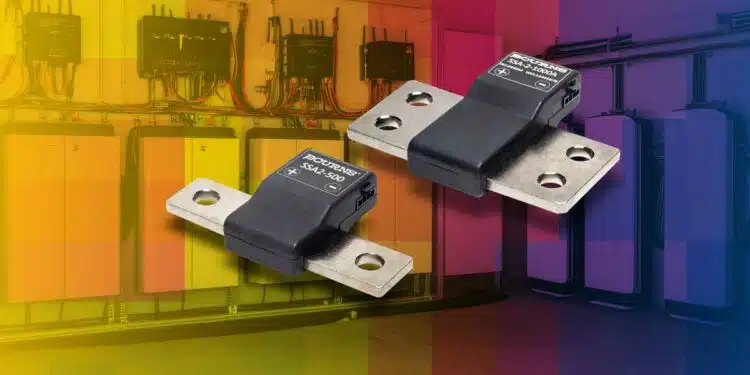Bourns, Inc., a leading manufacturer and supplier of electronic components for power, protection, and sensing solutions, released its Riedon™ Model SSA-2 Series Shunt Sensor – Analog by Bourns.
These shunt sensors deliver a high accuracy current sensing solution with greater operational stability compared to typical Hall effect sensors.
This series is designed to provide immunity to stray magnetic fields as they can detrimentally interfere with the operation of sensors in sensitive electronic devices, potentially causing inaccurate readings, device failure or even safety hazards.
In addition, the Model SSA-2 Series meets unipolar power supply requirements, making these devices superior measurement choices for a wide variety of battery-related current sensing applications including large-scale energy storage banks, renewable energy generation infrastructure, industrial motor drives, building automation systems, and fuel cells.
The Model SSA-2 Series is constructed with innovatively-designed analog Hall effect current sensors that offer ±0.1 percent sensing accuracy and ±0.1 percent linearity over their entire current range, with low susceptibility to temperature drift. In addition, the sensors’ low-noise resolution and offset performance allows accurate low-current measurements, and also provides excellent gain and linearity performance over the entire temperature range.
Offering wide bandwidth AC and DC support, this series features nominal current range values from 100 A to 1000 A, making it more adaptable to different environments and a wide variety of market applications.
Features
- 100 A to 1000 A Nominal current
- AC or DC circuits
- 1500 VDC Reinforced isolation
- Amplified differential output, ±2.5 V peak
- ±0.2 % Tolerance
- RoHS compliant
Applications
- Battery systems
- UPS systems
- Renewable energy
- Motor drives
- Frequency inverters
- Fuel cells
































